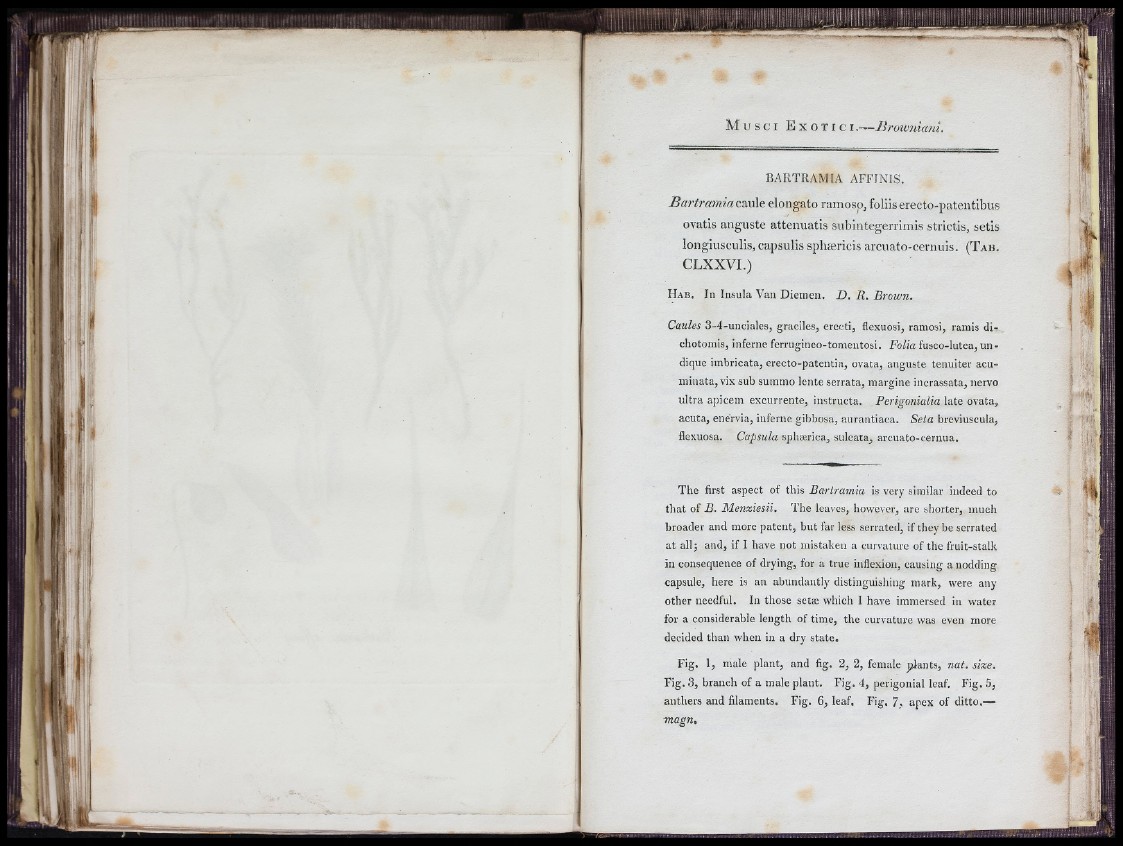
BARTRAMIA AFFINIS.
BariramiacwSe. elongato ramoso, foliis erecto-patentibus
ovatis anguste attenuatis subintegerrimis strictis, setis
longiusculis, capsulis sphæricis arcuato-cernuis. (Tab,
CLXXVI.)
Hab. In Insula Van Diemen, H. R. Brown.
Caules 3-4-unciales, graciles, erecti, flexuosi, ramosi, ramis di-
chotomis, inferne ferrugineo-tomentosi. Folia fusco-lutea, u n dique
imbricata, erecto-patentia, ovata, auguste tenuiter acuminata,
vix sub summo lente serrata, margine incrassata, nervo
ultra apicem excurrente, instructa. Perigonialia late ovata,
acuta, enervia, inferne gibbosa, aurantiaca. Seta breviuscula,
flexuosa. Capsula sphærica, sulcata, arcuato-cernua.
il
3
The first aspect of this Bartramia is very similar indeed to
that of B. Menziesii. The leaves, however, are shorter, much
broader and more patent, but far less serrated, if they be serrated
a t all; and, if I have not mistaken a curvature of the fruit-stalk
in consequence of drying, for a true inflexion, causing a nodding
capsule, here is an abundantly distinguishing mark, were any
other needful. In those setæ which I have immersed in water
for a considerable length of time, the curvature was even more
decided than when in a dry state.
Fig. 1, m.ale plant, and fig. 2, 2, female plants, nat. size.
Fig. 3, branch of a male plant. Fig. 4, perigonial leaf. Fig. 5,
anthers and filaments. Fig. 6, leaf. Fig. 7, apex of ditto,—
magn.